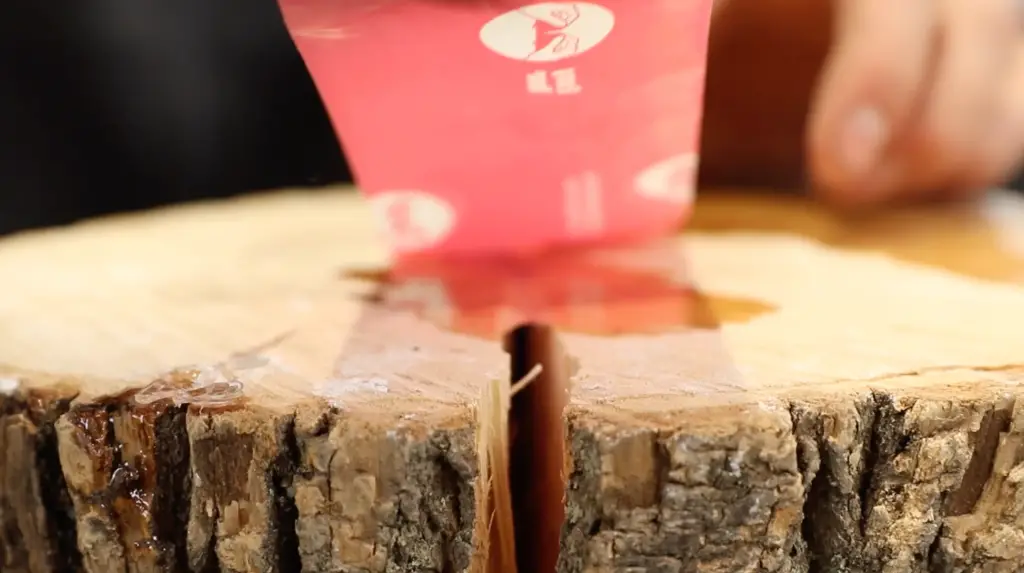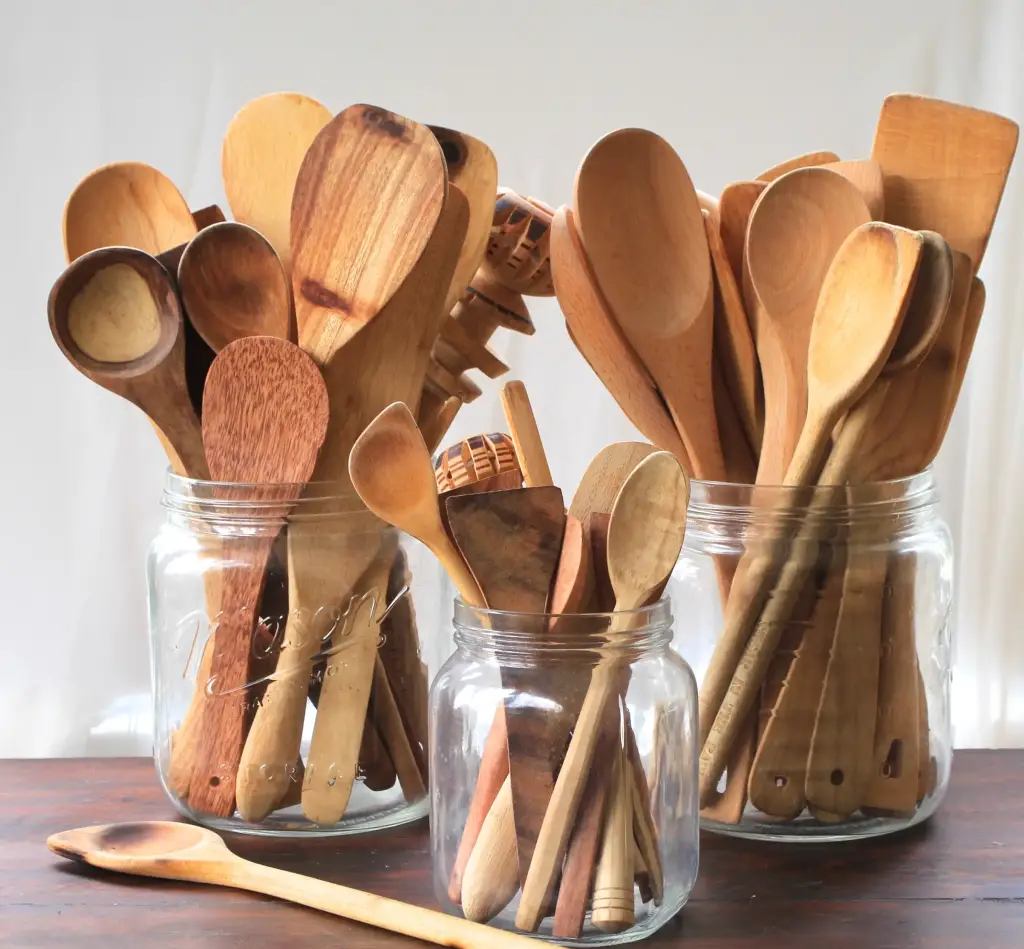You’ve found a crack in your beloved wooden furniture or DIY project. Don’t worry—we’ll show you how to stop it from spreading. First, get wood glue and a clamp. Apply wood glue generously along the fracture, ensuring it penetrates the wood fibers for a firm binding.
Carefully close and tighten the crack after applying adhesive. Remove the clamp after 24 hours of drying. Use dowels or splines with wood glue to secure the crack. Keeping wood cracks from spreading requires rapid and effective stabilization before they propagate.

Do you want to stop a crack in the wood from getting bigger? You can! We have easy tips to help you fix it and save your wooden stuff. Say goodbye to worrying about cracks growing; we’ll show you how to keep them small.
Checkout From Amazon
Understanding Wood Cracks and Their Causes
Table of Contents
Identifying the Crack and Its Severity
Look at the crack in the wood to see how big and deep it is. Small cracks are easy to fix, but big ones might need more work. Check if the crack is just on the outside or goes all the way through.
If the crack is not too deep, you can fix it with things like wood fillers or glue. But if it’s a big crack, you might need to use special stuff like butterfly joints or epoxy resin to make it strong again.
Applying Suitable Repair Methods
Wood glue mixed with sawdust or small holes at each end can mend a wood crack. After filling the crack, squeeze both sides to keep it together. For a firm bond, woodworkers clamp the components while the glue dries.
Importance of Stopping Cracks from Spreading
Identifying the Crack
When you notice a crack in wood, it’s crucial to identify its type and location. Surface cracks are usually easier to fix compared to deep ones. Look for any loose splinters or gaps that may indicate the crack is spreading.
Various factors, such as variations in humidity, temperature, or improper drying, can cause wood cracks. By identifying these causes, you can prevent further cracking and address the root issue.
Immediate Treatment
To fix a crack in wood, first clean the area around it with a wet cloth. Then, put wood glue in the crack until it’s full. Use a syringe for accuracy. Press both sides of the crack together with clamps until the glue dries to stop it from spreading.
Sealing and Finishing Touches
Once the glue has dried and sealed off the crack effectively, consider sanding down any excess glue residue for a smooth finish. You can then apply a matching stain or paint over the repaired area to blend it seamlessly with the rest of your wooden surface.
Initial Steps to Stabilize Wood Cracks
Identify the Crack’s Direction
Check the wood crack’s direction. Knowing its spread helps address and stabilize it. Parallel to the wood grain, cracks are harder to stabilize than cross-grain cracks.
- Understanding the direction of the crack aids in planning suitable stabilization methods.
- Horizontal cracks are generally easier to stabilize compared to vertical ones.
Clean and Prepare the Crack
Remove debris from the fracture before repairing it. Remove dust, grime, and loose wood from the crack with a soft brush or compressed air. Remove any old glue or finish that could inhibit repair material adhesion.
- A clean crack allows for better penetration of stabilizing agents.
- Ensure there is no moisture present, as it can affect how well repairs adhere.
Choose an Appropriate Filler Material
Filler material selection is vital to preventing cracks from expanding. Choose epoxy resin mixed with sawdust or commercial wood fillers for crack repair. Apply ample filler to the cleaned crack with a putty knife.
- Epoxy resin mixed with sawdust provides strength while blending seamlessly with the natural wood color.
- Commercial wood fillers come in various shades, matching different types of wood for a seamless finish.
Apply Pressure and Allow Time for Drying
After you put the stuff in the crack, push it together with clamps if needed. Let it dry all the way so the filler sticks well and stops more cracks in your wood.
Checkout From Amazon
Techniques to Prevent Wood Cracks from Spreading
Fill the Crack with Wood Filler

Wood filler is a substance that can fill in cracks and prevent them from spreading. Apply the wood filler generously, making sure it seeps into all parts of the crack. Once dried, sand down the excess filler for a smooth finish.
Pros:
- Easy to apply and readily available.
- It helps restore the appearance of the wood surface effectively.
Cons:
- May not be as durable as other methods.
Use Epoxy Resin
Epoxy resin is a strong adhesive that can help stabilize wood cracks and prevent further spreading. Mix equal parts of resin and hardener, then apply it to the crack using a putty knife. Allow it to cure fully before sanding down any excess resin.
Pros:
- Provides excellent strength and durability.
- Can be sanded and painted over for a seamless finish.
Cons:
- It requires careful mixing and application.
Install Reinforcement Plates
Reinforcement plates are metal pieces placed along the length of a crack to provide extra support and prevent spreading. Secure these plates using screws or nails on either side of the crack. This method is particularly useful for large or deep cracks in wood.
- Measure the length of the crack accurately.
- Place reinforcement plates along both sides of the crack.
- Securely attach plates using screws or nails at regular intervals.
Using Fillers for Crack Repair
Wood Fillers Overview
Cracks can be repaired and prevented with wood fillers. These fillers can be applied to cracks as putty or paste.
Wood fillers stabilize and strengthen broken wood to prevent it from expanding. They also help the damaged area merge with the surrounding wood after drying.
Pros:
Effective in repairing cracks
Easy to apply
Available in various colors to match different wood types
Cons:
May require sanding after application for a smooth finish
Application Process
To fix a crack in wood, first clean out the crack with a brush. Put filler in the crack with a putty knife. Wipe off extra filler with a damp cloth. Let it dry. Sand it down to make it smooth
First, clean out the crack. Second, put filler in the crack. Third, wipe off extra filler. Fourth, let it dry as directed. Fifth, sand it down for a smooth finish.
Filler application provides an affordable and practical solution for stopping cracks in wooden furniture or structures from worsening over time while restoring their aesthetic appeal effectively.
Applying Epoxy for Durable Repairs
Filling the Crack with Epoxy

Wood cracks can be prevented using strong epoxy glue. Mix it properly, following the instructions. Apply epoxy with a putty knife and let it set before sanding. Epoxy connects and strengthens wood, making it durable. Fissures are maintained, and damage is prevented. It can withstand moisture and temperature, making it perfect for woodworking.
Sanding and Finishing Touches
Strong epoxy glue prevents wood cracks. Mix it as instructed. Wait to sand after applying epoxy with a putty knife. Durable epoxy bonds and strengthens wood. Maintaining fissures prevents damage. Moisture and temperature resistance make it ideal for woodworking.
Sanding and Finishing After Repair
Sanding Process
After epoxy-repairing the wood crack, sand it down. Sanding smooths. Use coarse sandpaper to level it, then finer for a smooth finish. To avoid lumps and rough places, sand the designated area equally with the wood.
Finishing Techniques
After fixing the hole, apply a finish to protect your wood from water and damage. Finish with wood-matching or clear varnish for a natural look. When applying the finish, follow the wood grain and let each coat dry before adding more. Thus, your repair will be robust and smooth.
Checkout From Amazon
Preventive Measures for Future Cracks
Proper Wood Maintenance
Humidity changes wood size. To prevent cracks, seal the wood carefully to maintain moisture. Finish or seal it for weather protection. Check the wood often for issues. Add finish or sealant to fix them quickly. This will avoid cracks.
Pros:
- Extends the lifespan of the wood.
- Preserves the aesthetic appeal.
Cons:
Requires regular maintenance.
May need reapplication over time.
Humidity Control
Get a hygrometer to check how much moisture is in the air. Use a humidifier or dehumidifier to keep the air just right for wood. Also, don’t put wood near heat or cold spots that can mess up the humidity.
Maintenance Tips for Wood Longevity
Identifying the Crack
If you see a crack in wood, check if it’s just on the surface or deep inside. A small crack can be fixed easily with wood putty or glue. But if the crack goes all the way through, it needs special fixing. Big cracks near edges or joints can be tough to fix and might need help from a pro to keep the wood strong.
Filling Surface Cracks
If you have tiny cracks in your wood, you can fix them easily. Use wood putty to fill the crack and make it smooth with sandpaper later. This stops water from getting in and makes it look nice again. Another way is to use superglue to stick the crack together and let it dry. Just be careful with glue!
Repairing Deep Cracks
Butterfly joints, or Dutchman repairs, are needed for deep wood fissures. Butterfly joints are made by cutting a groove across the fractured area and gluing in a butterfly-shaped hardwood patch. Dutchman patches, on the other hand, replace damaged wood with custom-cut pieces.
A professional carpenter can help you repair large cracks without damaging your wood.
Summary
You understand wood cracks and why they must be prevented. They can be repaired using epoxy or fillings. Sanding and finishing are crucial for a good finish. Care for wood things extends their lifespan. Don’t worry about cracks—you can fix them professionally!
Frequently Asked Questions
How do wood cracks form, and why is it important to prevent them from spreading?
Wood cracks can result from various factors, like moisture content changes or physical stress. Preventing them from spreading is crucial to maintaining the structural integrity of the wood and avoiding further damage.
What are the initial steps to stabilize wood cracks effectively?
To stabilize wood cracks, start by cleaning out debris, assessing the crack’s depth, and applying appropriate stabilization methods such as clamps or sealants to prevent further splitting.
Which techniques can be used to prevent wood cracks from spreading?
Fillers are ideal for minor surface-level cracks in wood. They provide a quick fix by filling in gaps and preventing dirt accumulation while also improving the appearance of the damaged area.
Why is epoxy considered a durable option for repairing wood cracks?
Epoxy is highly adhesive and provides strong bonding properties that make it effective for repairing deep or structural cracks in wood. It creates a resilient seal that helps reinforce weakened areas and prevents further cracking over time.

